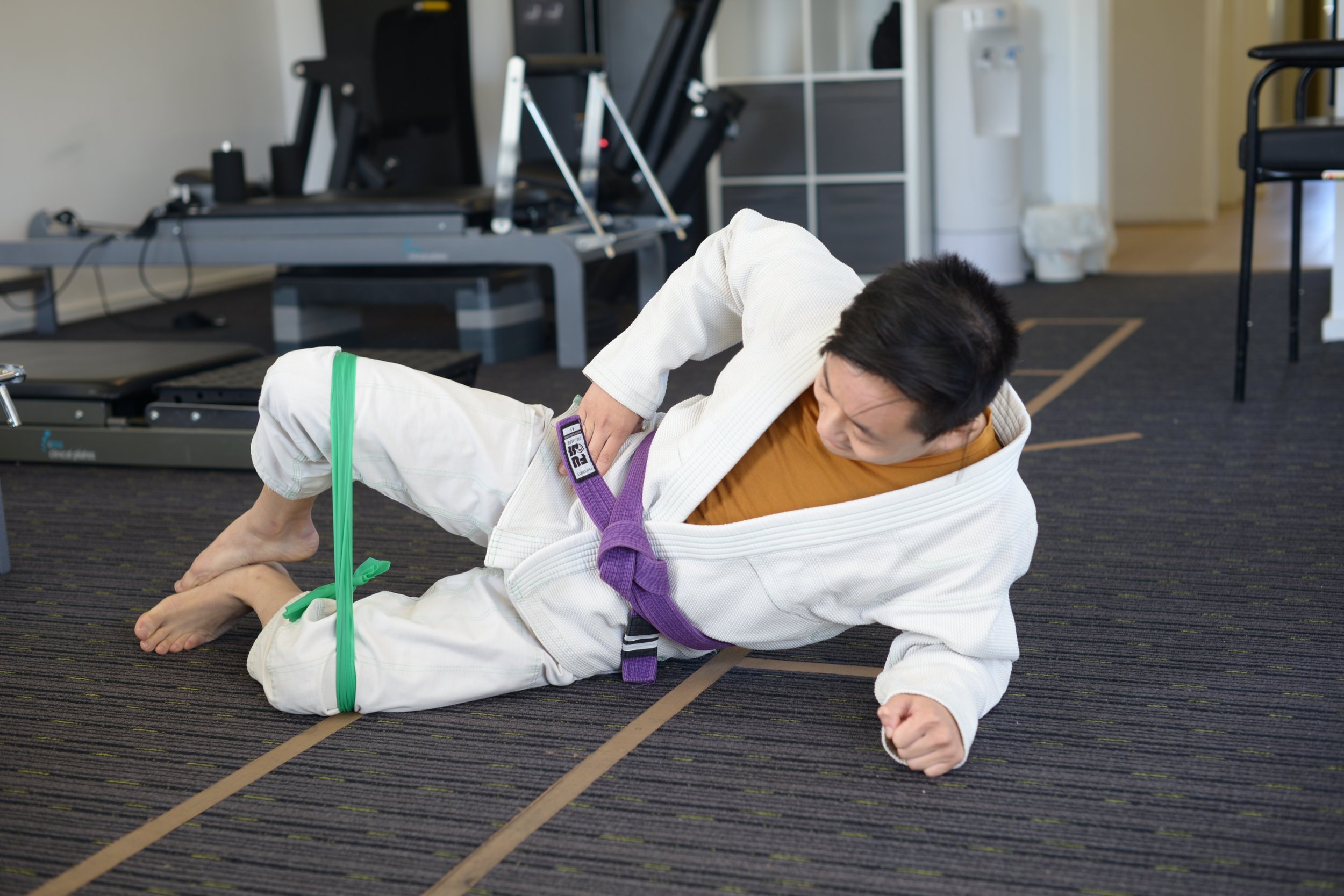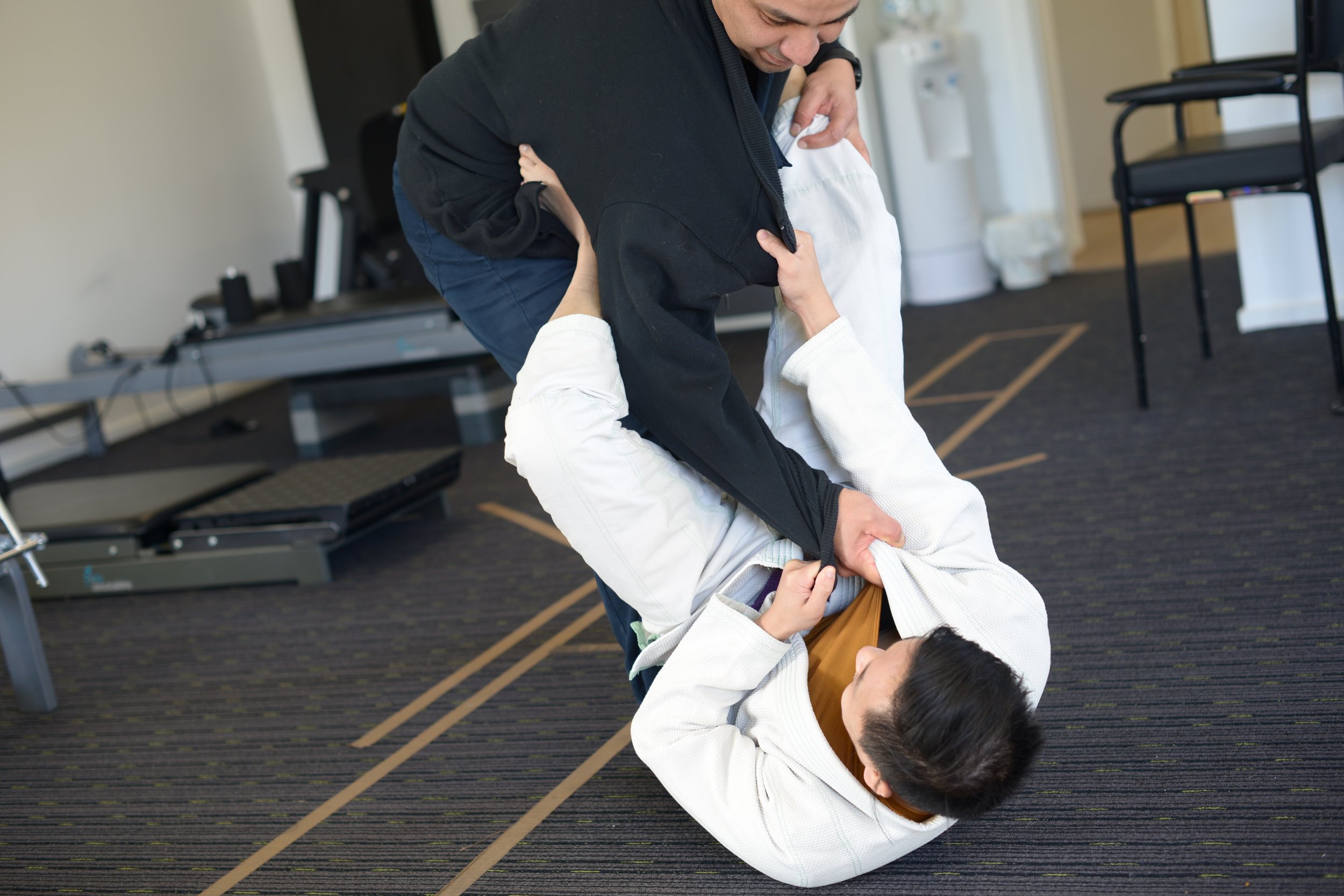Rolling Resilience: Lower Back Injuries in bjj
Brazilian Jiu-Jitsu (BJJ) is a grappling based martial art with an emphasis on submissions, chokehold and various ground based techniques for offence and defence. BJJ has pioneered the “guard” position whereby an individual is active off their back, using both arms and legs to submit and sweep a standing opponent. This requires a high degree of leg dexterity and mobility to block, entangle and control their opponent. When against a resisting opponent, this may result in the body being forced into odd and contorted positions under heavy load.
Our Physiotherapist, Chris Nguyen, winning GOLD in Purple Belt Division, Rooster Weight Class!
Needless to say, lower back pain is very common in BJJ practitioners. They can exist on a spectrum of minor acute spasms that take a few days to resolve, or potentially disc herniations that may be chronic in nature. Injury prevention is crucial regardless of the level of the practitioner which can be accomplished through a routine exercise program.
These are some examples of some helpful exercises to build core and hip strength:
Bridge
The bridge is a fundamental defensive movement in BJJ. It engages one's glutes and spinal erectors to achieve the extension of one's hips. This exercise can be accomplished with just one’s body weight but can be easily progressed with weights, resistance bands, etc.
Demo of a bridge in BJJ
Demo of a bridge exercise with theraband
Clam Shells
Hip stability and strength is crucial in BJJ as it requires the lower limb to operate a wide range of motion. Clam shells engage the gluteal muscles to assist with the opening up of the hips while also working through a functional range of motion that translates well to many guard positions .
Demo of a guard position in BJJ
Demo of clamshell exercise
Lunging Wood Choppers
BJJ involves many non-linear movements. Guard players are often required to twist and stretch their limbs when defending against their opponent or attempting to obtain certain positions. Wood choppers allow for the engagement of one's core through a rotational plane when using some resistance bands.
Demo of a guard position involving a twisting motion
Demo of a wood chopper exercise using the cable machine
In the event of an injury it is important to consult a professional. Following a proper assessment, they can identify areas of deficits and tailor specific exercises to address these weaknesses. Additionally, they can recommend modifications to one training and an appropriate return to training plan.
If you are looking to rehabilitate your BJJ injury, build an injury prevention program or build a program to enhance your BJJ performance, come see Chris down at Reservoir and Heidelberg!








